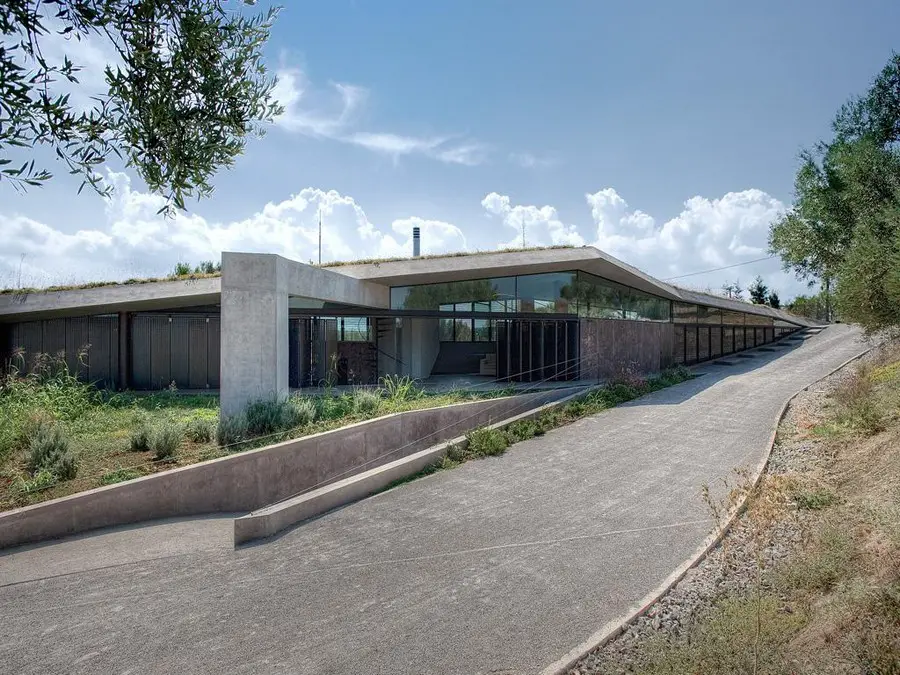Sculptural Buildings, Architecture Article, Design Debate, Review, Dialogue
Sculptural Architecture : Architectural Dialogue
Built Environment Discussion by Nigel Henbury, Architect, England
12 Mar 2013
Sculptural Architecture Design
SCULP(ITEC)TURE
When Architectural order is unable to create an appropriate solution, language or environment, then sculptural form takes over.
Such is apparently the case with a group of built projects featured this week.
Sikamino Residence, Greece
Design: Tense Architecture Network
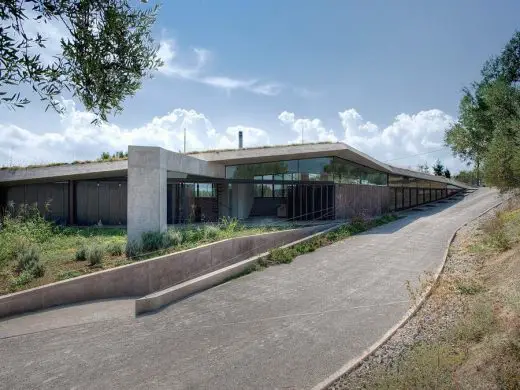
photograph : Stelios Delis
The Sikamino, house in Greece by the Tense Architectural Network features bold concrete forms of dynamic geometries orchestrating shelter, transitional areas and key horizon lines, blending with the immediate topography.
Avincis Winery, Dragasani, Romania
Design: BBM Grup S.R.L.
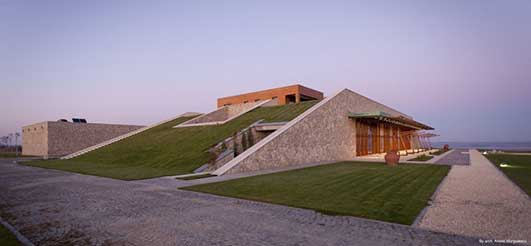
photo : Andrei Margulescu
The Alvincis Winery in the Olt Valley, Romania by BBM Grup on an elevated site displays clean planar lines and volumes to contain and retain, separated yet homogenised by graded earthforms.
Giants Causeway Building
Heneghan Peng Architects

photo : Marie-Louise Halpenny
The Giant’s Causeway visitors’ centre in Northern Ireland by Heneghan Peng cleverly caters for the potential hundreds of thousands of tourists annually to this World Heritage site by extending and partly submerging around simple geometry generated to flow with the terrain. Sculptural detail alluding to the geomorphology of the site is used to articulate a place of gathering, filtering to control and inform before release through the portal to the natural wonder of the place.
Centre for Cancer and Health, Copenhagen, Denmark
Design: NORD Architects
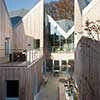
photo : Adam Mørk
Sculptural form is used by NORD architects in their project accommodating a Cancer centre in Copenhagen. The building has a ‘saw-tooth’ roofline over a juxtaposition of spaces. The scale and consistent purity of a building form without apparent adornment in seen as creating a special place for the treatment and care of patients. The result is very distinctive and gives the building the potential to be seen as a beacon of good practice and hope.
School of Art and Design, Amposta, Spain
Design: David Sebastian + Gerard Puig Arquitectes
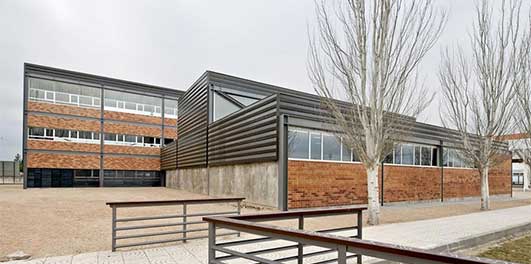
photo : Adria Goula
The School of Art and Design in Amposta Spain by David Sebastian and,Gerard Puig , Arquitectes is a building articulated by clean engineering and superbly understated to accommodate the creative activities within. The overall appearance is that of a building of contradictions in the way that structure and cladding might coexist -therefore architectural order is lost – and a sculptural quality results. Brilliant!
Richard Deacon’s Cornice, London, UK – Art for St James’s Gateway Development
Design: Eric Parry Architects
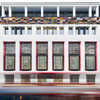
photo : Dirk Lindner
Finally, sculpture as adornment is employed on the St James’ Gateway in London in a collaborative approach by the artist Richard Deacon to embellish the elevations created by the architect Eric Parry.
Architect Nigel Henbury
Nigel Henbury
Nigel Henbury, author of this Architectural Dialogue article, is a Diploma Graduate of Portsmouth School of Architecture, England, golf course architect and Licentiate Member of the Landscape Institute, UK
Architecture articles by Nigel Henbury
Material World – Nov 2012
Organic Architecture – Sep 2012
Architectural Growth – May 2012
Skyscraper Building Design – Jan 2012
Cultural and Contextual Identity – Aug 2011
Landscape Architecture
Architecture Articles – Selection
Resisting Boredom : article by Joyce Hwang. Jan 2011
Sizing Identities : article by Sergio López-Piñeiro. Jan 2011
Design Narrative : article by Lee Miles – Sep 2010
Comments / photos for the Sculptural Buildings – Architectural Dialogue Article page welcome

